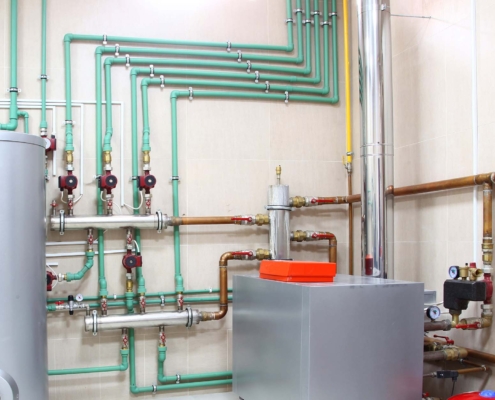 https://www.aircomfort.com/wp-content/uploads/2022/10/What-Is-IECC-and-How-Does-It-Affect-Your-Business__.jpg
1250
2000
Ike Oji
/wp-content/uploads/2021/08/AC_Logo_FIN_-wTag.png
Ike Oji2022-10-31 09:00:002023-04-27 15:24:16What is the IECC?
https://www.aircomfort.com/wp-content/uploads/2022/10/What-Is-IECC-and-How-Does-It-Affect-Your-Business__.jpg
1250
2000
Ike Oji
/wp-content/uploads/2021/08/AC_Logo_FIN_-wTag.png
Ike Oji2022-10-31 09:00:002023-04-27 15:24:16What is the IECC?Commercial HVAC Replacement vs. Retrofitting
If your organization has been experiencing more commercial HVAC issues, temporary repairs will only get you so far. You may have already begun considering replacing your HVAC infrastructure altogether. But have you explored the possibility of retrofitting your existing equipment to extend its serviceable life without having to overhaul your HVAC system? In this post, we’ll explore how to decide which is ideal for your needs, along with some of the benefits of each.
Extending the Life of Your System
The ultimate goal of an HVAC retrofit is to extend the working life of your existing equipment. If your equipment has been failing on a regular basis, but you don’t have the money to invest in a complete HVAC replacement, retrofitting is likely your best option.
If, however, you’ve already gotten your money’s worth with an HVAC system that’s lasted 10 to 15 years, and you have the money to afford a new system, that’s probably a more viable option.
Improving Air Quality and Comfort
In terms of improving air quality and indoor air comfort, there’s no better option than a new system with the latest equipment. However, if you’ve just noticed cold or warm spots at your facility, a retrofitting solution may be all it takes to optimize performance and address the issue. Depending on the age and peak loads of your existing system, a retrofit may be able to reduce drafts, improve airflow, reduce operating noise levels, and deliver more balanced climate control.
Getting a Return on Your Investment
Whether you’re considering commercial HVAC retrofitting or replacement, your goal should be to drive energy efficiency to reduce overhead expenses. Because retrofitting generally requires a lower capital investment than replacement, you can expect a quicker return on your investment. On the other hand, while a comprehensive HVAC replacement costs more upfront and takes longer to experience an ROI, cost savings can be expected for substantially longer than simply retrofitting.
Leveraging Rebates and Incentives
Retrofitting outdated, less efficient equipment may entitle your business to additional tax rebates and other financial incentives. Because retrofitting frequently involves upgrading existing equipment to be more energy efficient, local, state, and federal governments offer incentive programs to encourage upgrades. By leveraging all available incentive programs, you can often retrofit and upgrade your current equipment for less than you may have anticipated.
Getting the Most From Your HVAC Investment
Whether you’re considering a retrofit, a complete replacement, or you need emergency commercial HVAC repair, the experts at Air Comfort have the skills and hands-on experience to resolve all your HVAC problems. We’ll work with you to develop a comprehensive HVAC solution that makes the most of your budget, takes energy efficiency to the next level, and eventually generates positive cash flow for your business. Get in touch with our team today, and we’ll start exploring how your HVAC system can add lasting value to your operations.
Related Postings
 https://www.aircomfort.com/wp-content/uploads/2022/10/What-Is-IECC-and-How-Does-It-Affect-Your-Business__.jpg
1250
2000
Ike Oji
/wp-content/uploads/2021/08/AC_Logo_FIN_-wTag.png
Ike Oji2022-10-31 09:00:002023-04-27 15:24:16What is the IECC?
https://www.aircomfort.com/wp-content/uploads/2022/10/What-Is-IECC-and-How-Does-It-Affect-Your-Business__.jpg
1250
2000
Ike Oji
/wp-content/uploads/2021/08/AC_Logo_FIN_-wTag.png
Ike Oji2022-10-31 09:00:002023-04-27 15:24:16What is the IECC? https://www.aircomfort.com/wp-content/uploads/2022/09/Electrical-equipment.energy-meter-is-a-device-that-measures-the-amount-of-electric-energy-consumed-by-a-residence.jpg
1250
2000
Valeriia Mamleeva
/wp-content/uploads/2021/08/AC_Logo_FIN_-wTag.png
Valeriia Mamleeva2022-09-22 09:00:052023-04-27 15:24:16How To Reduce Energy Use in Commercial Buildings
https://www.aircomfort.com/wp-content/uploads/2022/09/Electrical-equipment.energy-meter-is-a-device-that-measures-the-amount-of-electric-energy-consumed-by-a-residence.jpg
1250
2000
Valeriia Mamleeva
/wp-content/uploads/2021/08/AC_Logo_FIN_-wTag.png
Valeriia Mamleeva2022-09-22 09:00:052023-04-27 15:24:16How To Reduce Energy Use in Commercial Buildings https://www.aircomfort.com/wp-content/uploads/2022/09/boiler-room_.jpg
1250
2000
Valeriia Mamleeva
/wp-content/uploads/2021/08/AC_Logo_FIN_-wTag.png
Valeriia Mamleeva2022-09-15 09:00:372023-04-27 15:24:16How To Identify Common Boiler Problems
https://www.aircomfort.com/wp-content/uploads/2022/09/boiler-room_.jpg
1250
2000
Valeriia Mamleeva
/wp-content/uploads/2021/08/AC_Logo_FIN_-wTag.png
Valeriia Mamleeva2022-09-15 09:00:372023-04-27 15:24:16How To Identify Common Boiler Problems

About
Air Comfort’s mission is to work closely with customers to provide a true “comfort level” for their businesses, with uninterrupted performance and round-the-clock reliability.


